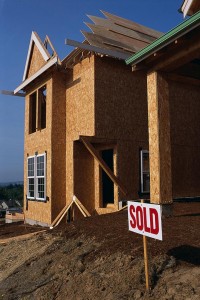Posted by Shawn Tully, senior editor-at-large
March 28, 2011 5:00 am
Forget stocks. Don’t bet on gold. After four years of plunging home prices, the most attractive asset class in America is housing.
A home under construction in Austin. The number of new homes in the pipeline nationwide is quite low.
From his wide-rimmed cowboy hat to his roper boots, Mike Castleman fits moviedom’s image of the lanky Texas rancher. On a recent March evening, Castleman is feeding cattle biscuits to his two pet longhorn steers, Big Buddy and Little Buddy, on his 460-acre Bar Ten Creek Ranch in Dripping Springs, a hamlet outside Austin in the Texas Hill Country. The spread is a medley of meandering streams, craggy cliffs, and centuries-old oaks. But even in this pastoral setting, his mind keeps returning to a subject he knows as well as any expert around: the housing market. “I’m a dirt-road economist who sees what’s happening on the ground, and in 35 years I’ve never seen a shortage of new construction like the one I’m seeing today,” declares Castleman, 70, now offering a biscuit to his miniature donkey Thumper. “The talking heads who are down on real estate will hate to hear this, but America needs to build a lot more houses. And in most markets the price of new homes is fixin’ to rise, not fall.”
Castleman is in a unique position to know. As the founder and CEO of a company called Metrostudy, he’s spent more than three decades tracking real-time data on the country’s inventory of new homes. Each quarter he dispatches 500 inspectors to literally drive through 45,000 subdivisions from Baltimore to Sacramento. The inspectors examine 5 million finished lots, one at a time, and record whether they contain a house that’s under construction, one that’s finished and for sale, or a home that’s sold. Metrostudy covers 19 states, or around 65% of the U.S. housing market, including all the ones hardest hit by the crash: Florida, California, Arizona, and Nevada. The company’s client list includes virtually every major homebuilder and bank — from Pulte (PHM) and KB Home (KBH) to Bank of America (BAC) and Wells Fargo (WFC).
The key figures that Metrostudy collects, and that those clients prize, are the number of homes that are vacant and for sale in each city, and the number of months it takes to sell all of them. Together those figures measure inventory — the key metric in determining whether a market has a surplus or a shortage of new housing.


Recent Comments